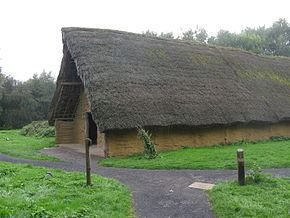Width 13 m (43 ft) Area 329.6 m² | Length 26 m (85 ft) Period Neolithic | |
 | ||
Founded Early to mid 4th millennium BC Similar Knap of Howar, Cairnpapple Hill, Tomb of the Eagles, Barnhouse Settlement, Crathes Castle | ||
Balbridie is the site of a Neolithic long house in Aberdeenshire, Scotland, situated on the south bank of the River Dee, east of Banchory. The site is one of the earliest known permanent Neolithic settlements in Scotland, dating from 3400—4000 BC, and the largest Neolithic long house to be excavated in Britain. In a European context, Whittle has indicated the rarity of such large Neolithic timber houses, citing Balbridie, a hall in Cambridgeshire and Fengate as a small set of such finds. Neolithic features found in a later excavations at Dreghorn included post holes indicating a large rectangular structure comparable to Balbridie.
Contents
Discovery
The Balbridie site was discovered in 1976 by aerial photography carried out by the Royal Commission on the Ancient and Historical Monuments of Scotland. The unusually dry summer revealed previously undetected cropmarks suggesting a very large structure. Subsequent archaeological work on site allowed the conceptual reconstruction of an enormous timber structure including the identification of large timber postholes.
Relationship to other very early features
The vicinity of Balbridie includes a number of other notable archaeological features including the Neolithic site of Bucharn. Watt has pointed out that this local area attracted an unusual density of very early settlement in Scotland. Balbridie is not only close to the River Dee but also to the Elsick Mounth trackway, the route of early crossings inland through the lower Grampian Mountains.
